
| Publisher: | Holt | |
| Genre: | Family Life, General, Literary, Asian American, Fiction | |
| ISBN: | 9781250141293 | |
| Pub Date: | June 2018 | |
| Price: | $27 |
| Starred | Fiction |
by Lillian Li
Debut novelist Lillian Li pulls open the kitchen doors of a Chinese American family's restaurant, revealing the devoted if dysfunctional relationships of its owners and staff.
Jimmy Han aspires to own a higher-class establishment than the Beijing Duck House, a classic Chinese restaurant founded by his now-deceased father in the suburbs of Washington, D.C. Before his new restaurant, the Beijing Glory, can be "as polished as the silver chopsticks he'd already bulk-ordered," though, Jimmy needs a cash infusion.
Hoping for help finding investors, he turns to longtime family "friend" and fixer Uncle Pang, who would prefer to burn down the Duck House for an insurance payout. Unwilling to go so far, Jimmy unwisely snubs Pang and decides to sell his parents' mansion instead. However, his tough mother, Feng Fei, still lives there and won't let it go without a fight. As the Glory's opening nears, the uproar in the lives of the Duck House family builds to a fever pitch sure to break more than a few dishes.
Li's portrayal of life in the restaurant business feels like an insider account of the challenging industry, with plenty of detail about the physical and mental rigor it demands. Though lightened with comedic moments, the quiet tragedy of familial resentment lies at the heart of the story. A smart combination of Chinese American life, service industry travails and the ups and downs of belonging to a family, Number One Chinese Restaurant will make great discussion fare for book clubs. --Jaclyn Fulwood, blogger at Infinite Reads
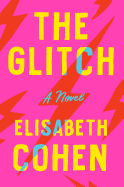
| Publisher: | Doubleday | |
| Genre: | Women, Humorous, General, Satire, Fiction | |
| ISBN: | 9780385542784 | |
| Pub Date: | May 2018 | |
| Price: | $26.95 |
| Fiction |
by Elisabeth Cohen
Shelley Stone has it all: a career as the CEO of Conch, a cutting-edge wearable tech company; a handsome husband; two intelligent children; a household staff in a decadent home in Silicon Valley; a toned, tanned body. She power naps while standing in lines to maximize her time, routinely wakes at 2 a.m. for business calls and schedules meetings with her children for optimal bonding time. But from the opening pages of Elisabeth Cohen's debut novel, The Glitch, it is clear that this model is becoming unsustainable.
The temporary disappearance of Shelley's four-year-old daughter from a family vacation kicks off a series of strange and stranger events that pull down the carefully constructed life that Shelley has built. She meets a young woman with the same name and scar as herself, who seems to know everything about Shelley's childhood memories. Conch comes under threat. Her husband considers moving to Brazil with their children. As the world around her crumbles and Shelley, for the first time in her life, begins to question herself, The Glitch starts to feel like a fever dream, throwing Shelley a series of increasingly bizarre challenges that may or may not be real. Though some of the plot twists in Cohen's debut are confusing at best, it's easy enough to ignore these faults as Shelley's search for something--the truth? Her purpose? What it means to have it all?--builds to a startling crescendo. With wit, humor and heart, The Glitch reflects on the role of technology in our lives, the very essence of reality and what it means to be a woman (wife, mother and leader) in a male-dominated world. --Kerry McHugh, blogger at Entomology of a Bookworm
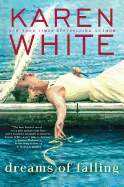
| Publisher: | Berkley | |
| Genre: | Women, Family Life, Mystery & Detective, General, Fiction, Women Sleuths | |
| ISBN: | 9780451488411 | |
| Pub Date: | June 2018 | |
| Price: | $26 |
| Fiction |
by Karen White
In Karen White's novel Dreams of Falling, three young women in the 1950s put their promise of eternal friendship to the test. Ceecee, Margaret and Bitty grew up together in Georgetown, S.C., but after two handsome men enter their lives, the rivalries and jealousies that have underlined their bond rise to the surface.
Meanwhile, in present-day South Carolina, Margaret's granddaughter Larkin returns home to look after her mother, Ivy, who's been hospitalized after falling through the floor of her dilapidated childhood home. Ever since Margaret's death years ago, CeeCee has looked after Larkin and Ivy, and does so again as Larkin is forced to face her hometown romantic history. Behind CeeCee's back, however, Larkin begins to suspect that her mother's presence in the house that day wasn't coincidental, but instead had to do with the mystery of what happened to Ceecee, Margaret and Bitty's friendship so long ago.
Atmospheric and rich, White's writing is an indulgent pleasure to read. She is certainly no stranger to crafting fast-paced, emotionally charged women's fiction. Having penned more than 30 novels (like The Night the Lights Went Out), she has mastered the compulsively readable rhythm that makes for compelling storytelling. She's also an expert at interweaving time periods, perspectives and genres. Offering a blend of women's fiction, romance, mystery and a touch of historical fiction, Dreams of Falling dips in and out of time, subplots and characters' consciousness with grace and fluidity. It showcases White's skill at building a cast of emotionally rich characters, as she juggles the fears and desires of five strong-willed women, all at the brink of revelation and disaster. Her keen emotional insights and warm authorial voice invite the reader into her stories the way one might welcome home a long-lost daughter. --Alice Martin, freelance writer and editor
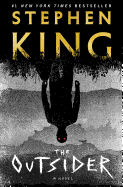
| Publisher: | Scribner | |
| Genre: | Horror, General, Suspense, Supernatural, Thrillers, Fiction | |
| ISBN: | 9781501180989 | |
| Pub Date: | May 2018 | |
| Price: | $30 |
| Mystery & Thriller |
by Stephen King
A young boy is brutally sexually assaulted and murdered in a small Oklahoma town, with an abundance of evidence pointing to one suspect. Terry Maitland is the Little League baseball coach, an English teacher and the apparent killer, given that his fingerprints and DNA are all over the crime scene. But a live feed from a local TV station shows he was miles away from the murder when it took place, and he claims to be innocent. So, how can one man be in two places at once?
The Outsider is an oddly structured Stephen King novel, starting out like his forays into crime fiction before taking a hard turn into being closer to classics like It and Salem's Lot. Ralph Anderson, the cop who arrests Maitland for the crime (in front of nearly the entire town at a baseball game), is faced with the contradictory evidence; even as the local district attorney wants to go to trial, Anderson tries to understand the inexplicable.
The Outsider is in many ways classic King, but it takes a bit of time for that to be revealed. Once the supernatural rears its head (which it does, in a terrifying fashion), fans will nestle into the author's trademark flair. It doesn't do much to change up what King does best (why fix what's not broken?), but he does seem interested in kicking at the edges of his box a bit and seeing how much he can warp the plot of a "Stephen King book." --Noah Cruickshank, adult engagement manager, the Field Museum, Chicago, Ill.

| Publisher: | Tor | |
| Genre: | Espionage, Thrillers, Fiction, Action & Adventure, Alternative History, Science Fiction | |
| ISBN: | 9781250178923 | |
| Pub Date: | June 2018 | |
| Price: | $25.99 |
| Science Fiction & Fantasy |
by Hannu Rajaniemi
Hannu Rajaniemi (The Causal Angel) rewrites 20th-century history in a wildly inventive sci-fi/fantasy hybrid filled with action and espionage.
Rajaniemi's 1938 looks familiar at first glance. Great Britain's Secret Intelligence Service tries to get the drop on the Soviet Union's NKVD as Europe lurches toward war. However, in this timeline, the British Empire has discovered and colonized the afterlife with a sprawling city called Summerland. Meanwhile, the Soviet Union is governed by a manmade god called the Presence, and aetheric energy--souls--powers the weapons of war.
Rachel White of SIS's Counter-Subversion Unit has spent 20 years fighting tooth and claw for her career. When a Russian defector trusts her with the name Peter Bloom, a dead British agent turned Soviet mole, Rachel's superior blows off the information as a ploy to make the SIS look foolish.
Certain that her source told the truth, Rachel sees no option other than to pursue the mole on her own. Meanwhile, Peter Bloom himself cultivates sources among the Spanish Republic's forces, gathering intelligence on an ambitious new player who goes by the name Stalin. Rachel and Peter's game of cat and mouse tests them both, but pales in comparison to the devastating truth about the afterlife that awaits their discovery.
With boundless imagination, Rajaniemi invents a mortal realm with a steampunk flair and an afterlife in which every brick of a city is built from souls. Sci-fi and fantasy readers will love exploring Summerland, and its capable, determined female lead steals the show. This standalone begs for a sequel continuing Rachel's adventures and deepening the lore of Rajaniemi's afterlife. --Jaclyn Fulwood, blogger at Infinite Reads

| Publisher: | Simon & Schuster | |
| Genre: | Biography & Autobiography, Film, General, Entertainment & Performing Arts, Performing Arts, Sports, Genres - Action & Adventure | |
| ISBN: | 9781501187629 | |
| Pub Date: | June 2018 | |
| Price: | $35 |
| Starred | Biography & Memoir |
by Matthew Polly
Matthew Polly's Bruce Lee: A Life is the definitive and authoritative biography fans of the Little Dragon have been waiting to read for more than four decades. This mammoth, 650-page book about the martial arts film superstar who died at age 32 is packed with new information and, like its subject, moves with lightning speed and grace.
The quick-tempered but philosophical Chinese American actor is a fascinating study in contrasts. As Polly (American Shaolin and Tapped Out) writes, Lee's "internal dichotomy and conflict between his punkish personality and monkish insights would define his adult life." As a juvenile, Lee made 19 films in China. But when he moved to the U.S., he found Hollywood difficult to navigate. While waiting for his big break, Lee taught martial arts, wrote a book and founded the martial arts form Jeet Kune Do. Hong Kong producer Raymond Chow rescued him from supporting roles, offering him leading roles in The Big Boss and Fist of Fury, and a chance to star in, direct and write The Way of the Dragon. The international success of these three films led to Lee starring in the first-ever Hong Kong-American co-production, Enter the Dragon. Before that film's premiere in 1973, Lee died from a cerebral edema (brought on by heat stroke, Polly persuasively argues). Chow's stage-managed cover-up (obscuring that Lee died at his mistress's apartment) fueled decades of conspiracy rumors.
Polly's meticulously researched and superbly written biography is a delight. (Even his 100 pages of footnotes are pithy and revelatory.) Bruce Lee: A Life is a spectacularly entertaining and candid biography that separates the myth and the man. --Kevin Howell, independent reviewer and marketing consultant
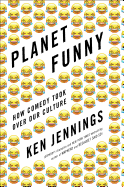
| Publisher: | Scribner | |
| Genre: | Social History, Popular Culture, General, Comedy, History, Social Science, Performing Arts | |
| ISBN: | 9781501100581 | |
| Pub Date: | May 2018 | |
| Price: | $26 |
| Social Science |
by Ken Jennings
Once upon a time (for millennia, actually), survival was the primary focus of the human race. But the ensuing drive toward progress changed that. While the 20th century was dominated by innovation, the 21st has been conquered by comedy and our insatiable need to find humor in every aspect of life. Is this a sign of how far we've evolved? "Everything is funny now," writes Ken Jennings. "Shouldn't we be happier?"
Jennings (Because I Said So!) explores the history of comedy, from the (almost) humorless Dark Ages to today, where funniness is ubiquitous (and embraced by millennials as the chief form of self-expression). Formulaic jokes have given way to absurd humor and sitcoms today can have six jokes per minute; previous generations could hardly have kept up. We expect everything to be funny--advertising, news, politicians, even airline safety videos--and to be funny all the time. Social media has leveled the playing field so everyone's a comedian, and jokes can go viral (or be panned) within minutes. When we're barraged by hundreds of jokes a day, Jennings argues, they "start to feel less and less like a treat."
Planet Funny is as humorous as you would expect (Jennings, who holds the longest winning streak on Jeopardy! is a funny guy), but also thoughtful. Discussions of edgy comedy in an increasingly socially conscious culture and humor's contribution to the coarsening of our discourse are important to consider. --Frank Brasile, librarian

| Publisher: | Melville House | |
| Genre: | Science Fiction & Fantasy, Philosophy & Social Aspects, Rock, Literary Criticism, Music, Genres & Styles, Popular Culture, General, Social Science | |
| ISBN: | 9781612196978 | |
| Pub Date: | June 2018 | |
| Price: | $26.99 |
| Essays & Criticism |
by Jason Heller
The antiwar movement, social equality and psychedelic drugs all influenced 1970s music and culture, but with the first walk on the moon and space exploration in full force, science fiction came to dominate it. Jason Heller's (Taft 2012) fun and authoritative new book makes a compelling case for how science fiction defined a decade in music.
The works of science fiction giants (Arthur C. Clarke's Childhood's End and 2001: A Space Odyssey; Anthony Burgess's dystopic A Clockwork Orange) inspired a generation of musicians, whose lush rhythms represented the enthusiasm and novelty of space travel while also expressing the dissonance of an increasingly technological world. Science fiction especially emboldened a young David Bowie, who intellectualized its themes lyrically in "Space Oddity" at the beginning of the 1970s and musically with the decade-ending "Ashes-to-Ashes." Science fiction themes would lead to the evolution of progressive rock (with forefather Jimi Hendrix leading the charge) and touch upon jazz and the psychedelic funk and soul of George Clinton and P-Funk. As the 1970s came to a close and "sci-fi became surface rather than substance," skepticism of technology and its indulgences would pave the way for the more minimalist style of punk and New Wave.
Heller's enthusiastic coverage of the decade is exhaustive and engrossing, showing how technological advances enriched rock in its polyphonic boldness and complexity. Readers not already familiar 1970s science fiction-influenced music will be inspired to explore and discover its lost melodies, especially those of David Bowie. "He wasn't from here," gushes Heller. "He wasn't of Earth." --Nancy Powell, freelance writer and technical consultant
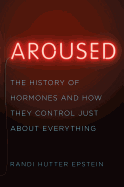
| Publisher: | W.W. Norton | |
| Genre: | Life Sciences, Science, Health & Fitness, Endocrinology & Metabolism, Human Anatomy & Physiology, Medical, Physiology, Endocrine System, Diseases | |
| ISBN: | 9780393239607 | |
| Pub Date: | June 2018 | |
| Price: | $26.95 |
| Science |
by Randi Hutter Epstein
When asked to explain the rambunctious behavior of teens and pre-teens, adults often roll their eyes and say: "hormones." However, it was not until neurosurgeon Harvey Cushing explored the pituitary gland and founded the science of endocrinology in the early 1900s that medicine began to understand the role of human gland secretions and coined the word hormone (from the Greek hormao, meaning to arouse). This and other fascinating details of the history of endocrinology can be found in Randi Hutter Epstein's funny, informative and accessible Aroused (after her similarly entertaining discussion of the nuts and bolts of childbirth in Get Me Out).
With medical and journalism degrees and as Writer-in-Residence at Yale Medical School, Epstein brings a savvy background to a book rich in clever digressions as well as scientific know-how and historical fact. She began her research thinking "hormones were boobs and periods and sex," but quickly realized that they really "control growth, metabolism, behavior, sleep, lactation, stress, mood swings, sleep-wake cycles, the immune system, mating, fighting, fleeing, puberty, parenting and sex"--most everything that makes us human.
What Mary Roach did for the alimentary canal in Gulp and Hope Jahren did for botany in Lab Girl, Epstein does in spades for our glandular network: the pancreas, adrenals, thyroid, ovaries, testes and pituitary. As she summarizes: "They aim to get us back to normal when things are out of whack. And they can be the cause of commotion, too." Maybe the adults are right about flaky teen behavior after all: hormones. --Bruce Jacobs, founding partner, Watermark Books & Cafe, Wichita, Kan.
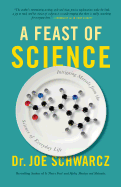
| Publisher: | ECW Press | |
| Genre: | Life Sciences, Chemistry, Applied Sciences, Reference, Science, General, Biology, Trivia | |
| ISBN: | 9781770411920 | |
| Pub Date: | May 2018 | |
| Price: | $17.95 |
| Science |
by Dr. Joe Schwarcz
Belief is powerful--consider the placebo effect, the persistence of myths, the preponderance of "alternative facts." In a time with a veritable glut of information and when "any twit can twitter," popular science writer and radio personality Dr. Joe Schwarcz offers an antidote to ignorance with A Feast of Science: Intriguing Morsels from the Science of Everyday Life.
Schwarcz (Is That a Fact?) is an expert in a field fraught with sensationalized stories, with cherry-picked facts that grab headlines but lack (or misrepresent) substance. Does Nutella cause cancer? No. But misleading stories to that effect have run wild, and the myth persists. Schwarcz's morsels in A Feast of Science, like the absence of a Nutella-cancer link, are judiciously cited and swiftly delivered. Most come in brief essays that span no more than a few pages, even if their subjects span centuries: one on carbon dioxide draws connections between the Temple of Apollo and Apollo 13.
Schwarcz's love of learning and his enthusiasm for science are contagious. He includes anecdotes and references for every taste, from somewhat lowbrow--see the story of when Mark Twain dirtied his white suit in a visit with Nicola Tesla, or learn the risks of storing condoms near photocopy machines--to poignant, when he notes that upon learning of his wife's cancer, he, just like almost anyone else, immediately began Googling it.
"Wander about, picking up whatever you may deem to be a tasty morsel," he advises. And, for the record, you can do so while enjoying a spoonful of Nutella. --Katie Weed, freelance writer and reviewer
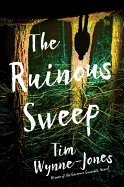
| Publisher: | Candlewick | |
| Genre: | Death & Dying, Visionary & Metaphysical, Mysteries & Detective Stories, Social Themes, Young Adult Fiction | |
| ISBN: | 9780763697457 | |
| Pub Date: | June 2018 | |
| Price: | $18.99 |
| Starred | Children's & Young Adult |
by Tim Wynne-Jones
Tim Wynne-Jones's (The Emperor of Any Place) latest work is a delirious, wild expedition that places the reader inside the perspective of a narrator whose every thought, memory and experience is unreliable.
17-year-old Donovan Turner (Dono to most, Turn to girlfriend Beatrice) is in the passenger seat of a car. On the backseat, there is "something under wraps, something still breathing but smelling as if it had stopped." "Too tired to keep his guard up," broken phrases and random words seep from Dono "in a slow drip": "Are you." He doesn't know where he is and he thinks he "did something bad" this evening, but he's "not sure what."
Concurrently, Beatrice sits by Dono's bedside in an intensive care unit. Neither his mother nor father can be reached--his mother is camping and his father is probably drunk--so Bee is the only loved one at his side. Donovan is "only barely alive" and Bee is trying desperately to make sense of the words he keeps muttering. "Are... you... See... Oh..."
Back and forth the work goes, traveling between Dono's alternate, purgatorial world and Bee's tangible, real one as a murder mystery--with Dono as the prime suspect--surfaces. This lightning-fast, dreamy and dark work is a contemporary Dante's The Inferno with nods to Kazuo Ishiguro's The Buried Giant (Wynne-Jones quotes both works at the beginning of the novel). Dono travels through a bleak, confusing (under)world, desperate to piece together the events that brought him to this place; Beatrice does detective work, collecting the scattered clues and constructing a timeline to prove Dono's innocence. The Ruinous Sweep is a feverish journey designed to make both the solution to and the mystery itself elusive. Unsettling and powerful, Wynne-Jones's work is intellectually and emotionally demanding and leads to a surprisingly strong catharsis. --Siân Gaetano, children's and YA editor, Shelf Awareness
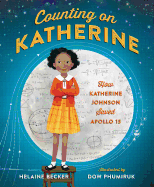
| Publisher: | Holt | |
| Genre: | Biography & Autobiography, Women, History of Science, People & Places, General, United States/20th Century, United States - African-American, Science & Nature, Mathematics, History, Juvenile Nonfiction, Science & Technology | |
| ISBN: | 9781250137524 | |
| Pub Date: | June 2018 | |
| Price: | $17.99 |
| Children's & Young Adult |
by Helaine Becker, illust. by Dow Phumiruk
Thanks to the 2016 movie Hidden Figures, Katherine Johnson became a household name. This engaging picture book biography, Counting on Katherine: How Katherine Johnson Saved Apollo 13, will undoubtedly spread her fame to a younger audience.
Katherine was an exceptionally intelligent black girl, born in 1918. But her intelligence couldn't save her from racism and segregation: even after she skipped three grades, her family had to move to another West Virginia town to find a high school for black students. After graduating from college at 18, she became a math teacher because it was impossible for her to become a research mathematician. More than 15 years later, she heard about opportunities for women--black women included--to become "computers" for the agency that would become NASA. This involved "calculating long series of numbers" very accurately, a task "that men thought [was] boring and unimportant." But Katherine "knew that without her contributions, a spaceship couldn't reach its destination, nor safely return to Earth." Becker (Lines, Bars, and Circles: How William Playfair Invented Graphs) relates exciting stories of Katherine's career: John Glenn trusting her exacting work in his Project Mercury triple orbit around Earth; Katherine joining the team that sent Apollo 11 to the moon; how she "saved" Apollo 13 when its flight path had to be changed.
Becker interviewed Johnson and used other sources to create a rounded picture of the woman who cared deeply for mathematics and used her knowledge to guide the U.S.'s space program. Neither Becker nor Phumiruk shy away from the realities of racism, depicting examples such as the jarring "Colored Computers" sign designating a room with only brown-skinned women. Dow Phumiruk's Photoshop-scanned watercolor and texture art is clean and attractive, with plenty of mathematical formulae, intertwining Katherine's major interest with Becker's fascinating text. --Melinda Greenblatt, freelance book reviewer